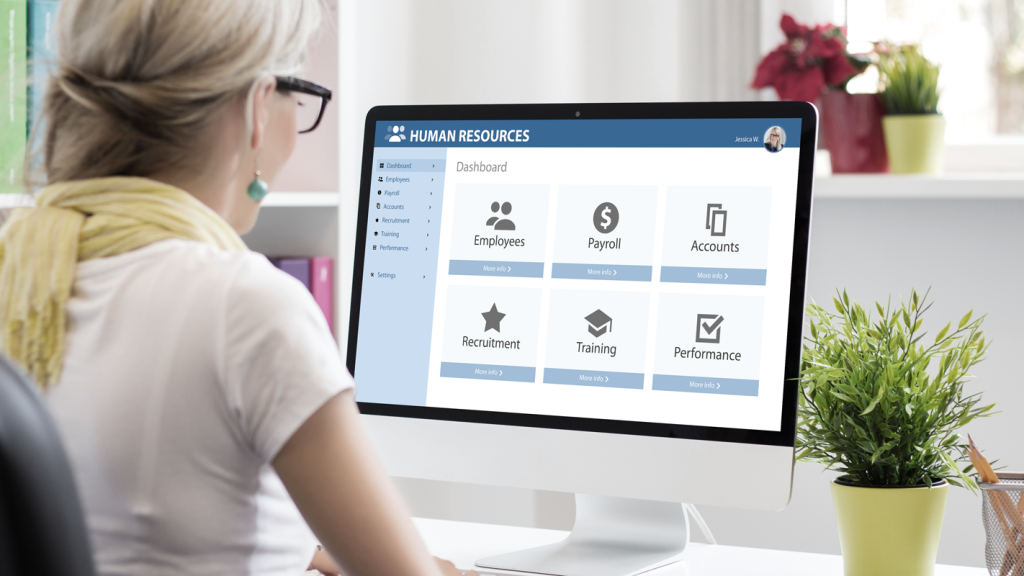Best Practices in Setting Up Payroll
1. Obtain Required Business Information

Get a Federal Employer Identification Number
To pay taxes and fulfill a number of obligations, your business will need an Employer Identification Number (EIN) or federal tax identification number. This unique set of nine numbers issued by the IRS identifies your company, much like a Social Security number identifies individuals. To receive an EIN, file IRS Form SS-4, Application for Employer Identification Number here.
Note that your business information must be kept up to date. If key facts about your business change, such as the responsible party, location or address, you need to update the information to the IRS within 60 days. The updates are done by filing Form 8822-B, Change of Address or Responsible Party – Business.
Get Other Required Identification Numbers
The Federal government isn’t the only entity that requires an identification number for tax purposes. The state in which you do business may also require identification numbers. States vary widely about what is required. So, the first step is determining the requirements in your state.
If your state or local levies income tax, you’ll need a business identification number. The application process and the information needed varies by state. You can look up the process by state here.
Some states require businesses to have a separate identification number for unemployment taxes. (These are used to fund state unemployment benefits.)
Finally, states vary in their workers’ compensation requirements as well. Most states require companies to have workers’ comp. (That’s true even if you only employ one person.) It is paid for by companies. It is a form of insurance that can be purchased from the state, from private insurers or both.
Some states mandate that you have a separate identification number for workers’ compensation for administrative purposes. It can be a good practice to issue this number when workers are first hired.
Workers’ compensation provides benefits to workers who become injured or ill at the workplace or as a result of the work they do. Workers’ comp pays for medical care related to a work-related illness or injury and for a percentage of lost income.
2. Obtain Required Employee Information
Payroll requires that you obtain specific information from employees, often by having them complete required government forms. Having all this done on their first day is a good practice.
You must have each employee complete Form I-9, Employment Eligibility Verification, to confirm their identity and authorization for employment in the United States. This is true for both U.S. citizens and noncitizens.
To determine the correct withholding for Federal income tax from each employee’s pay, each hire must complete Form W-4, Employee’s Withholding Certificate. Form W-4 requires information determining filing status, dependents each worker claims, and other information.
Businesses must also prepare a W-2, Wage and Tax Statement, for each employee who is paid more than $600 each year. To file a W-2, you’ll need each employee’s full name, complete address, and social security number.
Remember: Your company must file a W-2 with the Social Security Administration (SSA) every year. Please note that employees must also be issued a W-2 every year, usually by the end of January, so they can file their own income taxes in a timely way.
If your state levies state taxes, you’ll need to have each employee fill out a state withholding certificate or IRS Form W-4. Currently, all states have a state income tax except for Alaska, Florida, Nevada, New Hampshire, South Dakota, Tennessee, Texas, Washington and Wyoming. Learn more here.
3. Determine Which Benefits Employees Will Receive

Many employee benefits have a relationship to payroll. First, many benefits require employee contributions to the cost — and that cost is withheld from their paychecks.
Second, some employee benefits relate to the amount of time worked, and time worked is often tracked as part of payroll processing.
Employers can base benefits like paid time off (PTO) on time worked during a particular period. The federally mandated Family and Medical Leave Act (FMLA), which applies to companies with more than 50 employees, also relies on time worked, as employees must work 1,250 hours during the 12 months before they take leave. Note: The Federal government does not require any specific holidays off for private sector companies. Learn more here.
Laws and regulations can affect what benefits you must offer. Disability insurance, for example, is required in California, Hawaii, Rhode Island, New Jersey, and New York. Some states may also mandate the amount of PTO, require certain holidays off, or regulate health insurance. Learn more about mandatory benefits a company must provide full-time employees here.
Be sure to be aware of all applicable state laws as you consider benefits. You need to determine which optional fringe benefits you’ll offer and how much you will contribute vis-à-vis employees if applicable and set up a plan for employees to choose to participate. Most cost-shared benefits, such as a 401(k), can be chosen during an initial enrollment period shortly after an employee is hired or during a specified enrollment period during the year. Note that it can be a good idea to engage a 401(k) investments manager or third-party 401(k) plan administration team to advise you on this.
Benefits that depend upon time worked, such as PTO, are generally outlined in your company policies and given to employees as part of the onboarding process.
If you utilized Rollovers for Business Startups (ROBS) to fund your C Corporation, you must also have a retirement plan — such as a 401(k) — for all employees, as one is required to set up ROBS. See our Complete Guide to ROBS for more information.
Remember: Payroll contributions from employees to retirement plans, such as 401(k)s, are funded through pre-tax employee contributions. This can provide significant tax advantages to employees, making your business an attractive workplace.
Other common benefits to which employees can contribute through payroll withholding are:
- Health insurance
- Dental insurance
- Disability insurance
- Life insurance
- Flexible Spending Accounts (FSAs) or Health Savings Accounts (HSAs), which enable employees to save pre-tax wages in order to pay qualified health care costs.
Overall, benefits can also be a major factor in attracting and retaining employees to your company.
4. Be Aware of Employee Payroll Deductions
Employers should be familiar with payroll deductions. Any pretax benefit offered to employees, such as 401(k) contributions or health insurance benefits, are deducted first. Then, deductions required by government authorities or other organizations are made.
Here are the most common types of deductions:
- Federal income tax
- State income tax, if applicable
- Local income tax, if applicable
- Federal Insurance Contributions Act (FICA) tax, which funds Social Security and Medicare
- State Unemployment Tax Act (SUTA) taxes. Note: In Alaska, New Jersey and Pennsylvania, employees are required to pay part of SUTA taxes to fund unemployment compensation for laid-off workers. In all other states, only employers pay this tax.
After the taxes above are withheld, any post-tax deductions are made, such as:
- Wage garnishments. These can be ordered for violations of legal or other binding obligations, such as missed tax payments, child support or alimony payments, student loan payments or bankruptcy payments.
- Union dues
- Employee contributions to post-tax benefits, if offered, such as Roth Individual Retirement Accounts (IRAs)
5. Classify the Types of Employees
You need to classify your employees as exempt or nonexempt. “Exempt” means they are exempt from the Federal requirement that they be paid time and a half if they work more than 40 hours per week, which is a requirement of the Fair Labor Standards Act (FLSA).
“Nonexempt” means that regulation does apply, as does a similar requirement that they receive at least Federal minimum wage hourly.
Exempt employees are usually professional, managerial, sales or computer employees who are paid a salary. Generally, the salary must be at least $684 per week. Learn more here.
You also need to classify workers as full time or part time, as the difference can affect payroll withholding. Whether a given number of hours is full time or part time is generally determined by the employer, according to the DOL.
6. Decide How to Track and Report Work Time
If you have hourly, nonexempt employees, you may need to track work hours. There are several methods, such as having employees or supervisors track their hours digitally or having them punch in and out.
Along with the method, your company will need a system for who receives the reports of time, how often they’re received, and who approves them. You’ll also need a system for how the reports are given to payroll for processing.
Your decision should encompass factors such as ease and transparency, cost-effectiveness, and accuracy.
7. Decide the Payroll Schedule

Payroll checks can be issued weekly, every two weeks (biweekly), twice per month (semimonthly) or monthly. Be aware that the choice may not be completely in the employer’s hands. Specific pay schedules may be required for some jobs or by some localities or states. In California, for example, paydays must occur at least twice during a calendar month (with some exceptions for occupation). Union bargaining agreements also sometimes mandate the frequency of pay. Learn more about payday requirements in different states here.
Once you know any government or other mandates, your choice can be determined by cost and administrative efficiency. The more frequently you run payroll and gather data, of course, the more costs and administrative work you incur.
Weekly pay periods
Weekly pay periods are particularly common in the construction industry. In fact, 65 percent of construction firms pay this way. They are also common in leisure and hospitality and other industries where workers may need more frequent pay to meet their own expenses.
Biweekly pay periods
Biweekly pay periods are the most common type — with 43 percent of all companies issuing paychecks every two weeks. Biweekly pay ensures predictable cash flow for both employers and employees and strikes a balance in costs and administrative burden.
Semimonthly pay periods
Semimonthly pay is most common in information services, the finance industry and professional and business services.
Monthly pay periods
Although it’s the most cost-effective, monthly pay periods are not commonly used. Just over 10 percent of companies use this schedule. Monthly pay is usually used for people with high salaries.
8. Open a payroll bank account
It can be a good idea to open a separate account solely for payroll. Why? Because your business bank account is already used for many purposes. You need to keep accurate records of company cash flow, income and business expenses. That can get complicated. Payroll by itself can be complicated enough, too.
Keeping payroll in a separate account helps keeps your records transparent and eases your administrative workload. Your goal is always accuracy in payroll — and a separate bank account can make that goal easier and quicker to achieve.
9. Determine how you will issue employee pay

There’s one final decision to make: How will you issue payment to employees? You have multiple options to choose from, including:
- Direct deposit, which transfers payment electronically from your account to their individual account. You need to obtain employee account information either through a voided check or creating a form where they enter the information.
- Cutting physical checks and either handing them out or mailing them, to be deposited in employee accounts. Cutting a check can be done with the name, address and other information you’ve already obtained from the employee.
- Debit or other types of cards, which transfers payments from your company payroll account to their card. You will need to obtain the debit or other card information from each employee.
Direct deposit is the most cost-effective and convenient option, both for you and employees. It’s likely also the safest, as checks can be lost or stolen more easily. Additionally, direct deposit is the most common form of payment in the U.S. — with 94 percent of paychecks issued this way.
Remember: Ease and convenience of payment for employees can be part of the package that attracts and retains qualified workers.
Note that many states require that you issue a pay statement, regardless of what method you choose. A pay statement is the equivalent of a “pay stub” in a paper check; a pay statement shows the taxes taken out and any pretax or after-tax deductions. If you choose direct deposit or a debit card method, you must also provide required pay statements — which also serve as employee records.
Pre-Qualify Today!















